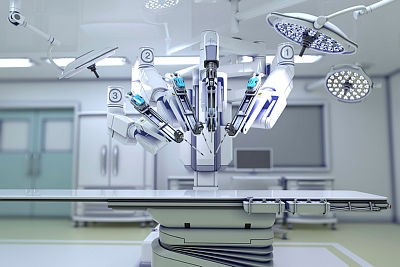
Chennai: Surgical oncologists at Chennai’s Apollo Cancer Centre (ACC) have successfully performed India’s first Robotic Cytoreductive Surgery (CRS) with Hyperthermic Intraperitoneal Chemotherapy (HIPEC) for a peritoneal surface cancer.
This minimally invasive, robotic-assisted approach marks a paradigm shift in treating Pseudomyxoma Peritonei (PMP), an aggressive appendix cancer, offering patients a new standard of care, enabling faster recovery and improved quality of life.
A female patient, aged 51, was diagnosed with bilateral ovarian masses and had extensive surgical intervention, including the removal of the uterus, ovaries, appendix, and part of the omentum, Subsequent histopathological examination revealed a high-grade mucinous tumour of the appendix with pseudomyxoma peritonei (PMP), necessitating additional surgery.
The patient was found to have residual mucinous implants (gelatinous deposits that remain in the abdomen post-surgery for appendicular mucinous tumors) in the pelvis and around the cecum (first part of the colon).
Due to the peculiar tendency of the appendix cancer to spread to the lining of the patient’s abdomen (peritoneum), Dr Ajit Pai and team performed minimally invasive Robotic Cytoreductive Surgery (to reduce the amount of cancer cells in the abdominal cavity) with right hemicolectomy (removing the colon which bears the appendix) and complete mesocolic excision (surgery for treating cancer arising from the colon and appendix) and peritonectomy and total omentectomy, along with Hyperthermic intraperitoneal chemotherapy (heated chemotherapy with a chemo drug) eliminating any possible microscopic residual tumours inside the abdomen.
Traditionally, CRS/HIPEC has been performed as an open and extensive operation, with a 10-12-inch incision associated with prolonged hospitalisation. The Robotic CRS approach offers significant advantages as it is minimally invasive; the clinicians made use of tiny 8mm incisions for the robotic instruments, minimising pain, blood loss, scarring and discomfort.
Additionally, a single SCM (sternocleidomastoid) incision was used for tumour removal and the delivery of HIPEC. This novel approach translated to a faster recovery and a quicker return to normal life for the patient. At one year follow-up, she remains in perfect health and cancer-free.



